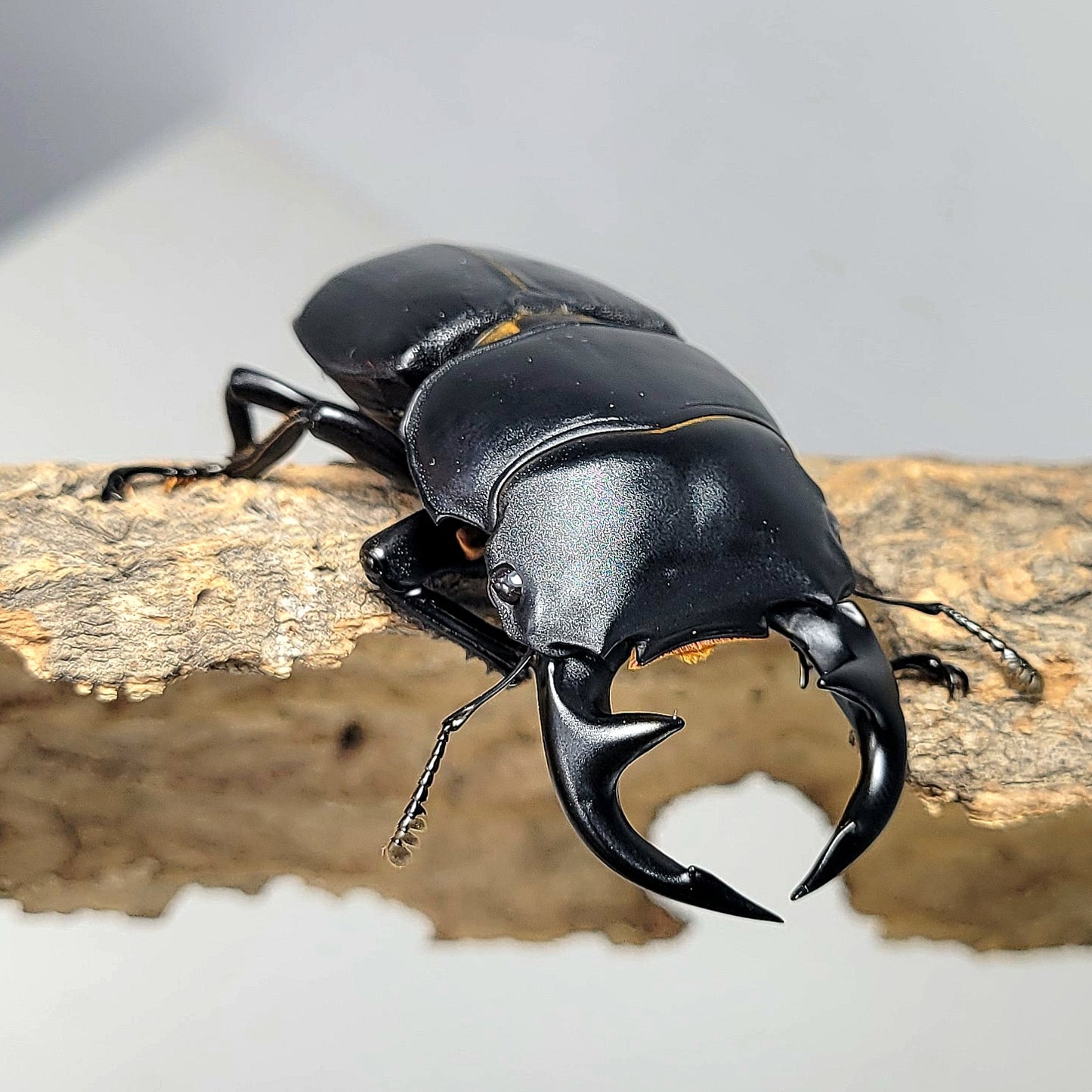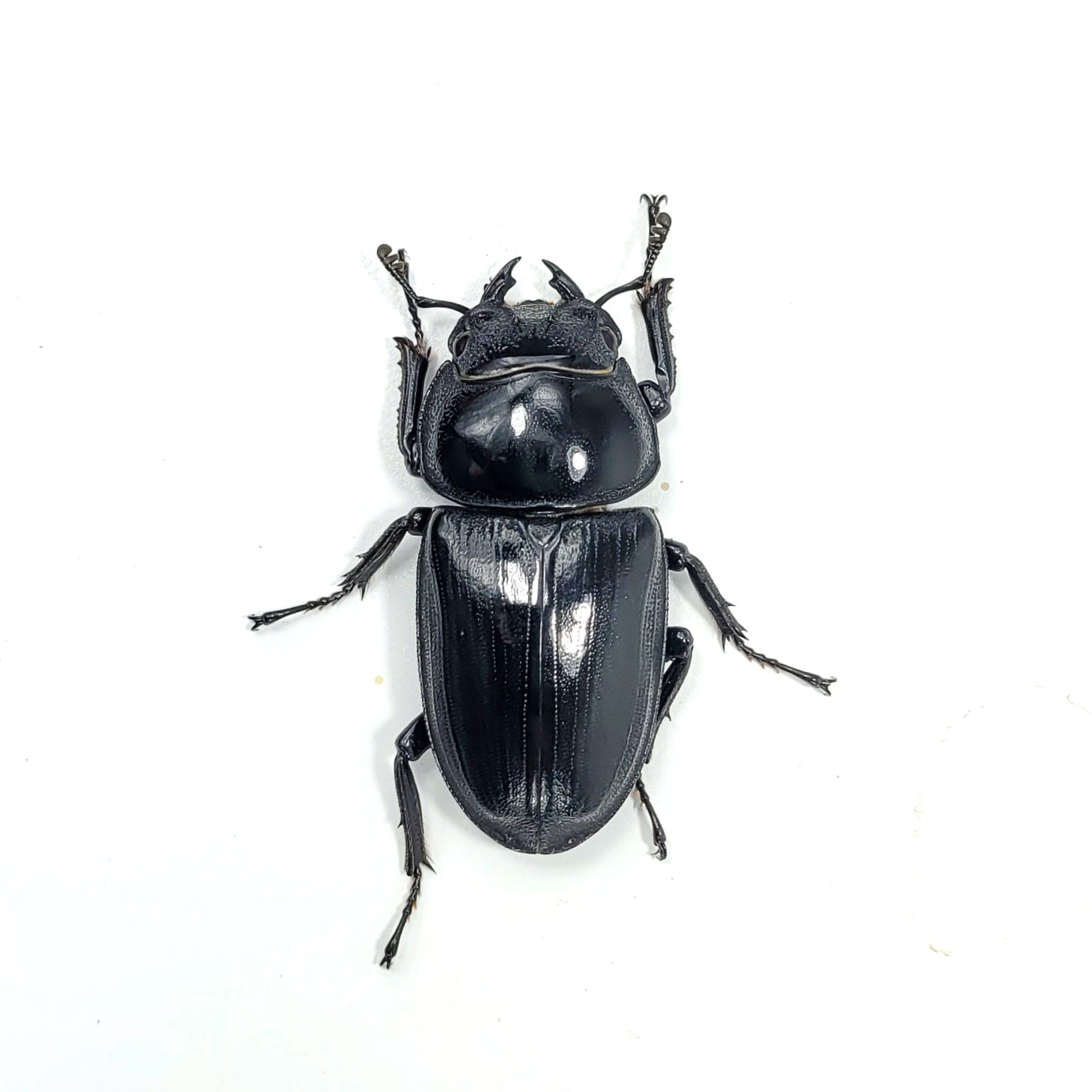James' Beetle Farm
Dorcus Grandis Grandis
Dorcus Grandis Grandis
Couldn't load pickup availability
Species Summary:
Adult lifespan: 2-4 years
Pupa period: 1-2 months.
Larva period: Male: 1 year Female: 4-6 months
Breeding difficulty: 3/10
Species Info:
Dorcus grandis grandis, commonly known as the Grand Stag Beetle, is a notable species of
stag beetle native to Southeast Asia. This beetle is admired for its impressive size and powerful mandibles, making it a favorite among insect enthusiasts and collectors.
The Grand Stag Beetle is one of the larger species within its genus, with males typically
reaching up to 90 millimeters in length, though some may grow even larger. The beetle's body is usually black, with a glossy exoskeleton. Males are particularly recognized for their large, curved mandibles, which are used in combat with other males during mating disputes. Females, while smaller and lacking the prominent mandibles, are still robust and sturdy.
This species is found in forested areas across Southeast Asia, including countries like Vietnam, Laos, and Thailand.
The Grand Stag Beetle prefers warm, humid environments and is often found in decaying wood, which serves as both a habitat and a food source for its larvae. These beetles are primarily nocturnal, with males often engaging in territorial battles to secure mates.
In the wild, Grand Stag Beetles feed on tree sap and decaying fruits. In captivity, they can be
provided with beetle jelly, which is specially formulated to meet their nutritional needs. They also enjoy soft fruits like bananas, apples, and mangoes. Maintaining a consistent and appropriate diet is essential for the health and longevity of both adults and larvae.
Breeding Dorcus grandis grandis in captivity requires an environment that closely mimics their natural habitat. Females lay their eggs in decaying wood or a nutrient-rich substrate, where the larvae develop. The larvae go through several molts before pupating and emerging as adults. The entire life cycle can take several months, with proper temperature, humidity, and substrate conditions being crucial for successful breeding.
The adult lifespan of the Grand Stag Beetle typically lasts several years. In captivity, it is
important to maintain a warm, humid environment with a substrate of decaying wood or organic material for the larvae. Regular misting and proper ventilation help to maintain the necessary humidity levels and prevent mold growth.
These beetles are generally calm and can be handled with care. Due to their powerful
mandibles, gentle handling is recommended, especially for males. The Grand Stag Beetle's
impressive size and striking appearance make it a fascinating species to observe and care for.
The Grand Stag Beetle (Dorcus grandis grandis) is a large and visually striking species from
Southeast Asia. Its powerful mandibles, robust body, and relatively straightforward care
requirements make it a rewarding species for beetle enthusiasts. Providing the right
environment and diet will help these beetles thrive in captivity, offering a unique opportunity to observe the behavior and life cycle of stag beetles.
Share










